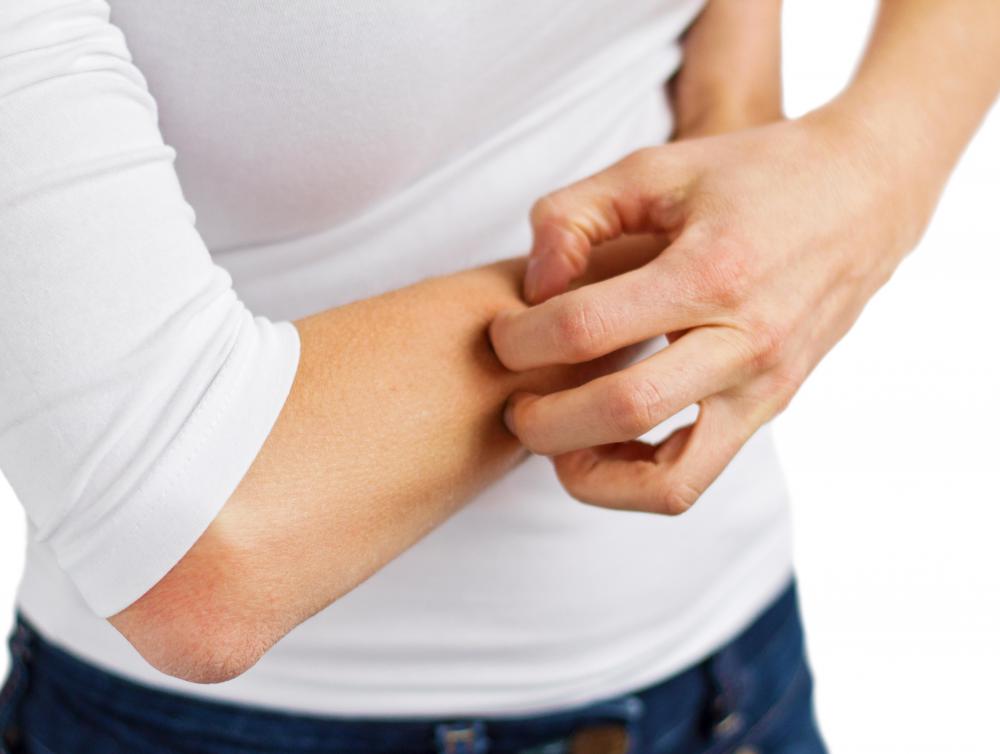At WiseGEEK, we're committed to delivering accurate, trustworthy information. Our expert-authored content is rigorously fact-checked and sourced from credible authorities. Discover how we uphold the highest standards in providing you with reliable knowledge.
What are the Different Types of Skin Lighteners?
Dark spots such as freckles or hyper pigmentation can be embarrassing, but there are many treatment options available to lighten darker ares of the skin. In general, there are three types of skin lightening methods available for bleaching or whitening the skin: topical creams, laser resurfacing, and cryosurgery. Skin lighteners have varying degrees of effectiveness, but in general have been proven to lighten the skin.
Topical ointments are the most commonly recommended skin lightening method. Hydroquinone is a popular topical cream in the United States and can be purchased over-the-counter in lower strengths at most drug stores; prescriptions strengths also are available and can be obtained through a dermatologist or physician. In Europe, topical ointments containing high concentrations of azelaic acid are more common and usually available over-the-counter in drug and beauty stores.

These ointments typically are meant for external use to lighten dark spots caused by age or skin disorders. With regular treatment, topical skin lighteners can bleach targeted areas of the skin. Individuals who have never used ointments for skin lightening may want to test small areas to check for allergies or bad reactions.
If over-the-counter topical ointments fail to produce the desired results, dermatologists can prescribe ointments with a stronger concentration of hydroquinone or azelaic acid. Sometimes these stronger solutions may be purchased at a pharmacy for home use, but some dermatologists may want to apply them during an office visit. In cases where external application is not working, dermatologists are able to inject the concentrated solution directly into the affected area.

Laser resurfacing treatment is another popular skin lightening method. Laser treatment is often recommended for individuals who are not seeing any results when using topical ointment. During laser resurfacing, a precision laser is used to remove darker areas of the skin leaving lighter patches behind. Laser resurfacing usually works better for individuals with naturally light skin, but also can be used to lighten any skin tone.

Cryosurgery is an alternative to laser resurfacing and typically works for individuals of all skin tones. During a cryosurgery skin lightening session, liquid nitrogen is used to remove dark patches of skin. Physicians carefully apply the liquid nitrogen a very small area of skin using a cotton swab. The nitrogen freezes the cells, causing them to die. Once the darker skin cells have been destroyed, naturally lighter skin cells usually form in their place.

Each method for skin lightening has its own side effects. The most common side effect experienced with skin lighteners is skin irritation. Both topical ointments and laser resurfacing can cause burning, while cryosurgery may lead to additional skin discoloration. When considering any skin lightening method, it is important to discuss the decision with a dermatologist before starting a treatment regiment.
AS FEATURED ON:
AS FEATURED ON:
















Discussion Comments
@talentryto- I don't like the thought of using chemicals on the skin, so of the two skin lightening methods, I prefer laser treatments. Though there might be some uncomfortable side effects, the results are nice once the skin heals.
To decrease the likelihood of side effects and negative results, anyone considering this type of skin lightening treatment should do some research. A safe doctor or dermatologist will have experience using lasers and good medical credentials.
To me the thought of harsh ingredients in creams and the process of laser skin lightening both sound dangerous. Does anyone have an opinion about which method is safer?
Post your comments